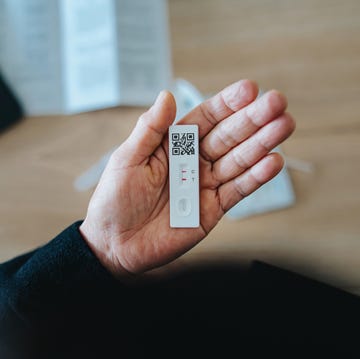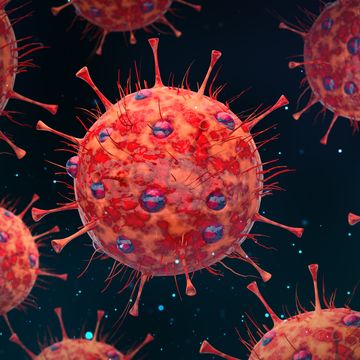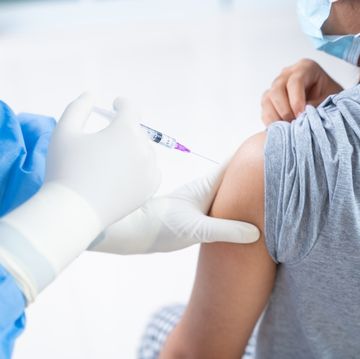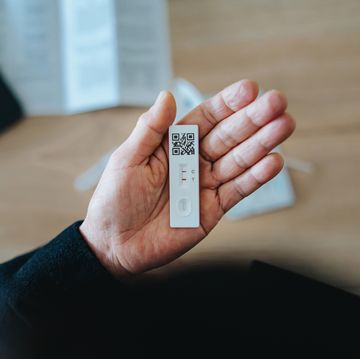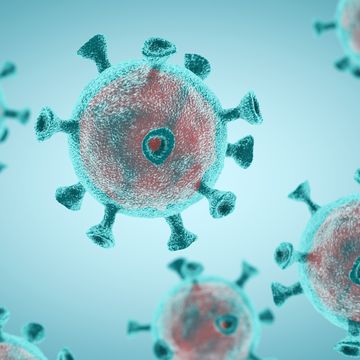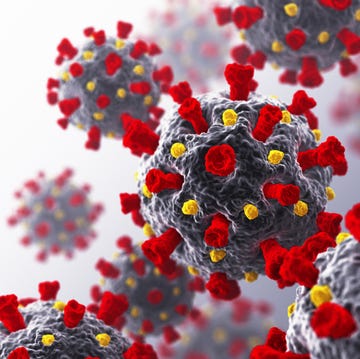It’s been over four years since the COVID-19 pandemic began and, at this point, you probably have a good sense of the major signs of an infection. But the coronavirus and how people respond to it has changed over time. The COVID-19 symptoms in 2024 do not look the same as they used to for many people, especially with new variants continuously popping up.
Meet the experts: Thomas Russo, M.D., is a professor and chief of infectious diseases at the University at Buffalo in New York; Amesh Adalja, M.D., is an infectious disease expert and senior scholar at the Johns Hopkins Center for Health Security; William Schaffner, M.D., is a professor at the Vanderbilt University School of Medicine
Now that the JN.1 variant has ebbed, the “FLiRT” variants make up a chunk of new cases in the U.S. Also known as KP.1.1. and KP.2 strains, these latest variants are sparking concern over a potential summer COVID surge. So, what are the most current COVID-19 symptoms in 2024? And what should you look out for? Doctors break it all down.
Is there a COVID surge right now?
Not really, according to data from the Centers for Disease Control and Prevention’s (CDC). But, there is concern that the latest variants may cause a surge in the coming months. Currently, hospital admissions are down more than 11% in the last week.
What are the newest variants, KP.2 and KP.1.1., known as “FLiRT”?
The “FLiRT” variants make up nearly 25% of COVID-19 cases in the U.S. right now, according to the CDC. These strains are descendants of JN.1.11.1, a spinoff of JN.1, which was the most common variant in the U.S. until recently, Thomas Russo, M.D., professor and chief of infectious disease at the University at Buffalo in New York, previously explained.
There’s not a lot of detail about these variants available at the moment, but preliminary research shows that KP.2 has three changes in its spike protein (what the SARS-CoV-2 uses to attach onto cells and infect you) compared to JN.1, Dr. Russo says. JN.1 descended from BA.2.86 and is a variant of Omicron.
What are COVID symptoms in 2024?
It’s important to point this out: The CDC last updated its list of COVID symptoms in March 2024. Those symptoms include:
- Fever or chills
- Cough
- Shortness of breath or difficulty breathing
- Fatigue
- Muscle or body aches
- Headache
- New loss of taste or smell
- Sore throat
- Congestion or runny nose
- Nausea or vomiting
- Diarrhea
“COVID-19’s symptoms are generally of the same spectrum that they have always been, with the exception of less frequently reported loss of taste and smell,” says Amesh Adalja, M.D., an infectious disease expert and senior scholar at the Johns Hopkins Center for Health Security.
“Overall, COVID-19 tends to look more like a cold, with a sore throat, runny nose, and maybe a fever and aches,” Dr. Russo says. That’s because people have built up immunity to the virus, whether from having a previous infection, getting vaccinated, or both, he says.
Some people are still getting seriously ill with COVID-19 and dying from the virus, though, Dr. Russo points out. Those include at-risk patients, including those who are very young or very old, people who are immunocompromised, pregnant people, and those with underlying lung conditions, he says. “Those people can develop shortness of breath and chest pain, in addition to the other symptoms,” he says.
The CDC says to seek emergency medical help and call 911 if you experience the following symptoms:
- Trouble breathing
- Persistent pain or pressure in the chest
- New confusion
- Inability to wake or stay awake
- Pale, gray, or blue-colored skin, pips, or nail beds, depending on skin tone
Do you need the updated COVID vaccine?
The CDC recommends that everyone aged five and up get the updated COVID-19 vaccine. But the uptake of the updated COVID-19 vaccine hasn’t been high. However, doctors say it’s still a good idea to get the vaccine if you’re able. “It’s not too late,” Dr. Russo says.
What are the latest COVID guidelines in 2024?
COVID guidelines recently changed. If you develop symptoms of the virus, doctors say it’s important to test yourself—especially if you’re at high risk for developing severe disease from COVID-19. “There is no way to tell whether someone has COVID-19 or any other respiratory viral infections except by testing,” Dr. Adalja says.
If you test positive for COVID-19, contact your doctor. “We have medicines that can help prevent milder illness from getting worse,” William Schaffner, M.D., a professor at the Vanderbilt University School of Medicine says. (If you test negative, but feel lousy, he also recommends contacting your doctor—they can test you for the flu, which also has medicine to treat it.)
If you’re positive for COVID-19, the CDC says that you can go back to your normal activities when you’ve been fever-free without the use of fever-reducing medication, and feeling better for at least 24 hours. When you go back to your normal activities, the CDC recommends that you “take added precaution” for the next five days, like using masks, practicing physical distancing, and testing yourself when you’ll be around other people indoors.
This article is accurate as of press time. However, as the COVID-19 pandemic rapidly evolves and the scientific community’s understanding of the coronavirus develops, some of the information may have changed since it was last updated. While we aim to keep all of our stories up to date, please visit online resources provided by the CDC, WHO, and your local public health department to stay informed on the latest news. Always talk to your doctor for professional medical advice.

